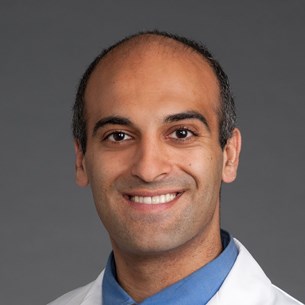Meeting
2019 ASCO Quality Care Symposium

University of New Mexico Comprehensive Cancer Center, Albuquerque, NM
Bernard Tawfik, Harmony Bowles, Zoneddy R. Dayao, Richard C. Lauer, Janet Abernathy
Background: The number and type of oral oncolytic therapy in oncology is expanding rapidly. Oral oncolytics have serious side effect potential and patient education has been shown to reduce adverse events. Pharmacist driven interventions have been shown to safety and adherence. The University of New Mexico Comprehensive Cancer Center (UNM CCC) initiated and then improved upon a pharmacist driven patient education and consent process for oral oncolytic therapy. Methods: A pharmacist driven education and consent process was initiated at UNM CCC and monitored from August 2016 to October 2018. The intervention initially used a message generated by an order in the Electronic Medical Record (EMR) to alert the pharmacist of new oral oncolytic prescriptions. Initial uptake by providers was low so education regarding this order was presented to providers. Outpatient pharmacy staff were instructed not to release first fill oral oncolytic prescriptions without notifying the pharmacist educator. Lastly, hematology and oncology fellows notified the pharmacist educator of patients discharged directly from the hospital with a new oncolytic prescription. The metric measured was the percent of patients on oral oncolytic therapy who were educated and consented by the pharmacist for oral oncolytic medications filled at UNM CCC. Statistical analysis included run charts with 95% Confidence Intervals and t-tests with two tails, assuming unequal variation between groups and an alpha of 0.05. Results: The initial monthly education and consent rate was 17.9% followed by 45.5% the following month. This quickly grew to an average of 87.0% (95% CI 55.7-118.2) for the subsequent 15 months which achieved control. Additional changes were made as part of the PDSA cycle which increased the education rate to 95.7% (95% CI 84.4-107.1). These two periods were statistically significantly different (p = 0.0025). Conclusions: A pharmacist driven program for education and consent upon initiation of oral oncolytics is possible and can successfully educate the majority of patients. Future expansions of this program will include ensuring patient adherence and educating patients who fill oral oncolytics outside UNM CCC.
Disclaimer
This material on this page is ©2024 American Society of Clinical Oncology, all rights reserved. Licensing available upon request. For more information, please contact licensing@asco.org
2019 ASCO Quality Care Symposium
Poster Session
Poster Session A: Cost, Value, and Policy; Health Equity and Disparities
Cost, Value, and Policy,Health Care Access, Equity, and Disparities
Integrating Non-oncology Clinicians Into Care Delivery
J Clin Oncol 37, 2019 (suppl 27; abstr 44)
10.1200/JCO.2019.37.27_suppl.44
44
D7
Abstract Disclosures
2023 ASCO Quality Care Symposium
First Author: Marina D. Kaymakcalan
2023 ASCO Quality Care Symposium
First Author: Gury K. Doshi
2019 ASCO Quality Care Symposium
First Author: Alan H. Breaud
2019 ASCO Quality Care Symposium
First Author: Audrea H Szabatura